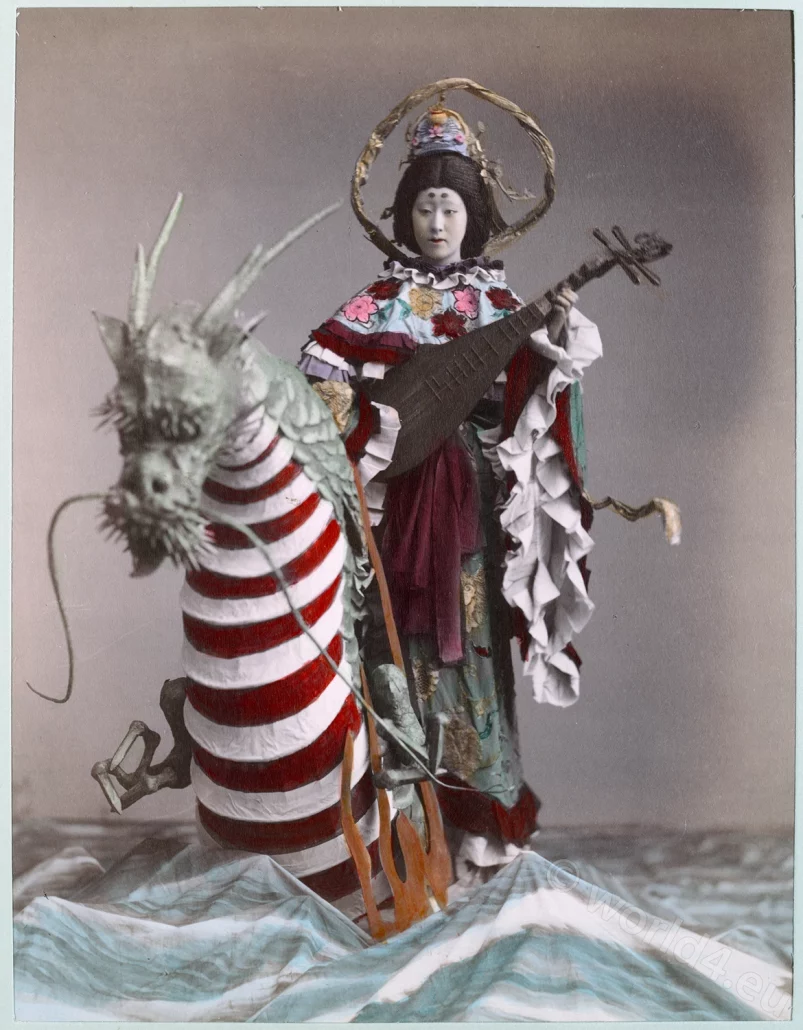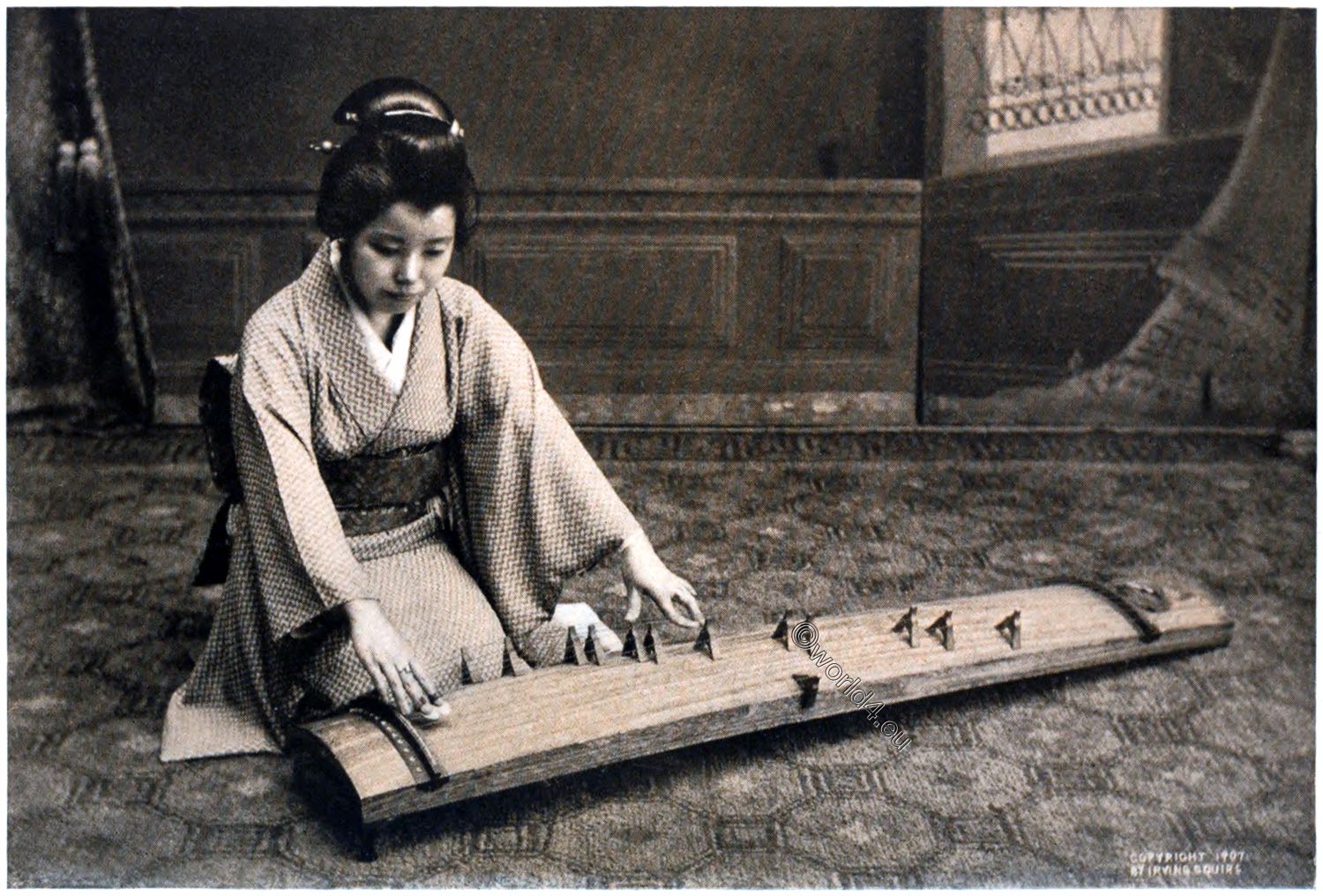THE SEA GODDESS BENTEN.
Benten, or Benzaiten, is one of the Seven Divinities of Good Fortune. She is often represented riding serpent or dragon. Benten’s shrines are usually situated on islands.
Benten—who is a conspicuous member of the Shichi-fukujin, “Seven Gods of Happiness.” Whether Benten is a distinct personality or her name a mere abbreviation of Benzaiten, can only be determined from the graphic arts, since there is no native literature on the subject. But whether this deity is referred to as Benzai-ten, Dai Benzai-ten, or Benten, she is always regarded as the goddess of beauty, love, and talents, and the particular diva of music.
She is the patron of the family and of the sea. She plays the flute and the guitar for the others, and amuses them at their feasts, sometimes even dancing for them. Her real home is in Riu Gu, and she is the Queen of the world under the sea. She often dwells in the sea or ocean caves. Her favourite animal is the snake, and her servants are the dragons.
Benten is often shown with a dragon, and her intercession in Enoshima against the troubles caused by such a creature, belongs to the story of Hojo Tokimasa *). In fact this Goddess is said to be “partly” a dragon.
*) HŌJŌ. Celebrated family of Kamakura “Shikken,” who from 1200 till 1333 were the real masters of Japan, during the rule of the “Puppet Shōguns.” They were descended from Taira Sadamori. The first Shikken was Hōjō Tokimasa, father of Masako, wife of Yoritomo. When the latter died in 1199, Masako and her father grasped the power; through the forced abdication and subsequent murder of Yoshiiyé they established firmly their influence upon the Shoguns, whom they practically superseded. They even tried to overthrow Sanetomo, but failed. To the third Shikken, Yasutoki, is due the feudal code, Teikan Shiki Moku.
Source:
- JAPAN. Described and Illustrated by the Japanese. Written by Eminent Japanese Authorities and Scholars. Edited by Captain F Brinkley (1841 – 1912) of Tokyo Japan. With an Essay on Japanese Art by Kakuzo Okakura (1860 – 1929) Director of the Imperial Art School at Tokyo Japan. 1897.
- Myths of China and Japan by Donald A. Mackenzie (1873-1936). London, The Gresham publishing company ltd, 1923.
- Legend in Japanese art: a description of historical episodes, legendary characters, folk-lore myths, religious symbolism illustrated in the arts of old Japan, by Henri Joly.



